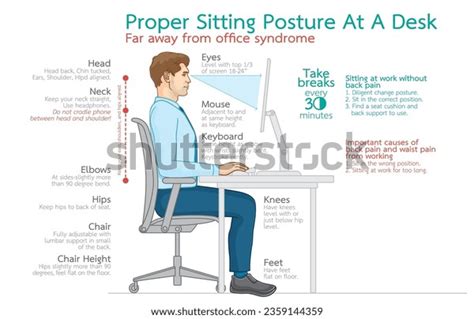For many modern men, a significant portion of their day is spent in a chair, hunched over a keyboard. While essential for work, this sedentary lifestyle can wreak havoc on posture and lead to persistent back pain. The good news is that with conscious effort and strategic adjustments, desk-bound men can reclaim their spinal health and mitigate discomfort.
Understanding the Desk-Bound Dilemma
Prolonged sitting, especially with poor posture, puts undue stress on the spine, neck, and shoulders. Muscles designed to support the body become weak and elongated, while others, like hip flexors, become tight and shortened. This imbalance often results in a forward head posture, rounded shoulders, and a slumped lower back, all contributing to chronic pain and decreased mobility.
Ignoring these early warning signs can lead to more serious conditions like disc issues, nerve impingement, and persistent muscle stiffness. Taking proactive steps now is crucial for long-term well-being and productivity.

Optimize Your Workspace Ergonomics
Your desk setup plays a pivotal role in maintaining good posture. Investing a little time to adjust your environment can yield significant benefits.
The Chair is Key
Ensure your office chair provides excellent lumbar support, allowing the natural curve of your lower back to be maintained. Adjust the height so your feet are flat on the floor or on a footrest, with your knees at a 90-degree angle. Your hips should be slightly higher than your knees. Ensure the armrests support your arms lightly, keeping your shoulders relaxed.
Monitor Placement Matters
Position your monitor directly in front of you, about an arm’s length away. The top of the screen should be at or slightly below eye level. This prevents neck strain from looking up or down excessively.
Keyboard and Mouse Positioning
Keep your keyboard close to your body to avoid reaching, which can strain your shoulders. Your wrists should remain straight and neutral while typing, not bent up or down. A wrist rest can be helpful, but it should support the heel of your hand, not your wrist.

Integrate Movement and Micro-Breaks
Even the most ergonomically perfect setup cannot counteract the negative effects of prolonged stillness. Regular movement is essential.
Aim to take short breaks every 30-60 minutes. Stand up, walk around, or perform a few simple stretches. Consider a standing desk converter to alternate between sitting and standing throughout the day. Even a quick trip to the water cooler or a brief stretch session can interrupt static posture and re-engage muscles.

Strengthen Your Core for Spinal Support
A strong core acts as a natural corset for your spine, providing stability and support. Many desk-bound men neglect core strength, which exacerbates back pain.
Incorporate exercises that target your abdominal and back muscles into your daily routine. Simple exercises like planks, bird-dog, and glute bridges can be done at home with no special equipment. Even practicing mindful breathing that engages your deep core muscles can make a difference.

Develop Mindful Posture Habits
Awareness is the first step to change. Periodically check in with your body throughout the day. Are your shoulders hunched? Is your head pushed forward? Gently adjust yourself.
Visualize a string pulling you upwards from the crown of your head, lengthening your spine. Keep your shoulders relaxed and slightly back, and your chin tucked in. Practice this awareness not just at your desk, but while standing, walking, and driving.

Beyond the Desk: Holistic Approaches
Improving posture and preventing back pain isn’t solely about your time at the desk. A holistic approach includes:
- Regular Exercise: Beyond core work, a balanced fitness routine including cardio, strength training, and flexibility improves overall physical resilience.
- Hydration and Nutrition: Proper hydration keeps spinal discs healthy. A nutrient-rich diet supports muscle and bone health.
- Quality Sleep: Adequate rest allows your body to repair and rejuvenate. Ensure your mattress and pillow support proper spinal alignment.
- Stress Management: Stress often manifests as muscle tension, especially in the neck and shoulders.
- Professional Help: If pain persists, consult a physiotherapist, chiropractor, or doctor. They can offer personalized assessments and treatment plans.
Conclusion
Improving posture and preventing back pain for desk-bound men is an ongoing journey that requires commitment and consistency. By implementing ergonomic adjustments, integrating regular movement, strengthening your core, practicing mindful posture, and embracing a holistic approach to your health, you can significantly reduce discomfort and enjoy a more active, pain-free life. Your future self will thank you for taking these steps today.




